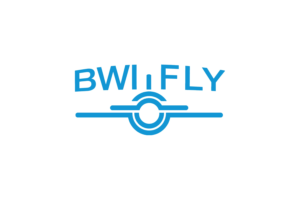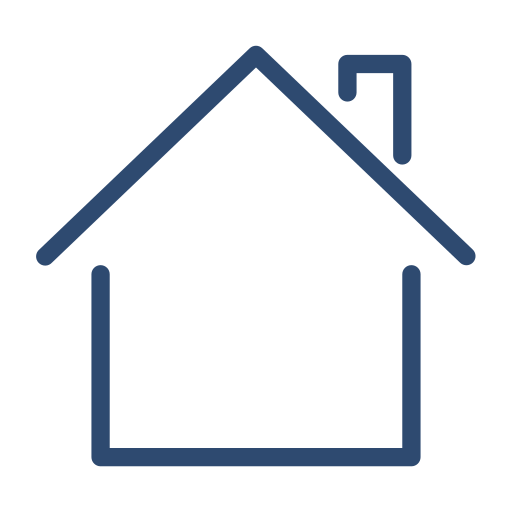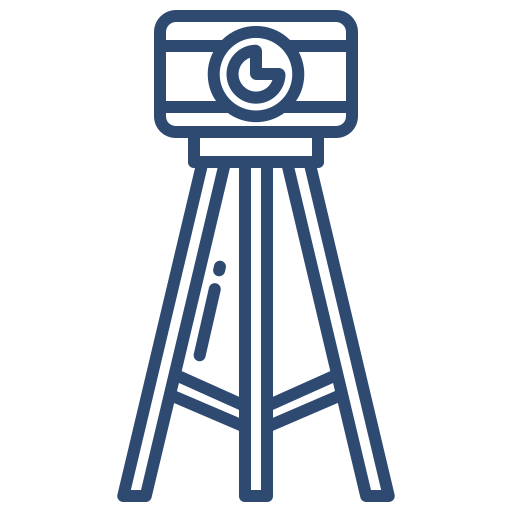DRONE INSURANCE ONLINE
Compare drone
insurance companies
Drone Insurance Company Comparison
![]()
SkyWatch.AI stands out for its adaptable insurance options, allowing customers to secure coverage on an annual basis, month-by-month, or even hourly for specific sessions. This variety caters well both to regular drone operators and occasional users.
Pros:
- Flexible coverage durations, including annual, monthly, or hourly options.
- A mobile app enables on-the-spot insurance activation, ideal for varying usage needs.
- Offers liability coverage options ranging up to $10 million.
Cons:
- Lacks international coverage options.
- Hourly insurance is restricted to pre-specified locations outlined in your policy.
The diverse plan offerings from SkyWatch.AI are particularly beneficial for those who fly drones frequently or engage in drone flying as a hobby. Established in 2016, SkyWatch.AI has secured support from notable investors such as F2 Capital, Kaedan Capital, and Verizon Ventures. Additionally, their policies are underwritten by Starr Insurance, which holds an A rating from AM Best for financial strength.
The coverage specifics of SkyWatch.AI are highly customizable, ranging from $500,000 to $10 million in liability protection. The company’s mobile app, available for download on Google Play or the Apple Store, provides a convenient way to manage and acquire coverage dynamically, suitable for drone operators on the move.
Pricing for monthly plans begins at $42, while annual coverage starts at $499. It’s important to note that while monthly and annual coverage plans are comprehensive, covering national operations, the hourly coverage is designed for designated areas only, tailored at the time of purchase.



Avalon Insurance provides a specialized Remotely Piloted Aviation System (RPAS) policy tailored to drone operators. This comprehensive insurance is crafted to protect against a variety of risks including third-party liabilities, damage to the drone hull, and associated equipment like ground and launch systems. Additionally, it covers drones during transit and while in storage, and includes war risk coverage.
Pros:
- Extensive coverage options that consolidate multiple needs in a single policy.
- Global coverage scope, including the USA and Canada.
- Customizable policies to fit specific operational requirements.
Cons:
- Details on specific exclusions and the range of coverage options require consultation with an Avalon representative.
- Potential complexity in understanding the various components covered, emphasizing the need for tailored advice.
Avalon’s drone insurance solutions are designed to meet the stringent requirements of commercial drone operations, ensuring that every aspect of drone activity is protected under robust insurance guidelines.
Avalon Insurance’s approach to drone insurance includes a focus on flexibility and security for operators in various industries, including film, agriculture, and engineering. This adaptability allows for modifications to policies to cover unique operational risks and meet specific regulatory requirements. Avalon’s insurance services also offer professional guidance to ensure that clients understand the specific protections that align with their operational scale and risk profile. This level of support is crucial for drone operators navigating the complex landscape of aviation regulations and insurance coverage.

Avion Drone Insurance is heralded as the best choice for weddings and events, specializing in commercial policies that include crucial coverage for aerial photography, a key element for capturing special moments at such occasions.
Pros:
- Offers comprehensive coverage tailored for drone enthusiasts and businesses, including hull insurance and coverage for aerial photography and attached equipment.
- Policy management and payments can be handled conveniently online.
Cons:
- Free online quotes are available, but obtaining one requires a drone serial number.
- Lacks a mobile app for on-the-go management.
Avion Insurance excels in providing commercial insurance solutions, emphasizing coverage for aerial photography and associated equipment. Since its inception in 1985, Avion has established itself as a prominent player in the drone insurance industry, catering to both commercial and recreational users.
The company partners with top-tier insurance providers such as AIG and Allianz to underwrite its policies, ensuring reliable coverage. Policies from Avion can be customized to include a range of protections, such as hull damage, liability, insurance for onboard cameras, and other drone-related equipment.
Avion’s insurance offerings are available nationwide. Potential customers can use Avion’s online tool to easily obtain a personalized quote, helping them gauge the cost for the desired coverage level.
![]()
Coverdrone is highly regarded for its extensive international coverage, ideal for drone operators who travel. The insurance policies cater to both commercial and recreational users, offering worldwide coverage with few exclusions.
Pros:
- Broad international coverage, allowing drone operation in multiple regions, subject to certain territorial exclusions.
- Flexible policy durations ranging from a single day up to a year.
- Comprehensive coverage includes in-flight, storage, and transport of drones.
Cons:
- Some territories are excluded due to local regulations.
Coverdrone, a prominent player since it was established, partners with leading insurers to offer robust protection that extends beyond just flight to include full policy customization. This includes options for hull damage and liability, suited to a variety of drone uses, from hobbyist photography to commercial drone flights.
Policies are competitively priced and can be managed online, although a direct inquiry might be necessary for specific details or claims, supported by an English-speaking customer service team.
Coverdrone offers a comprehensive suite of features tailored to both commercial and recreational drone users, ensuring extensive protection globally. Policies can be tailored with specific coverage options, such as equipment and liability insurance, catering to varying needs from aerial photography to commercial surveys.
![]()
DroneInsurance.com is recognized as the best for international drone coverage, offering policies that are applicable globally, although certain regions are excluded due to local drone regulations.
Pros:
- Provides coverage in nearly all parts of the world, except in territories where drone operation is prohibited.
- Flexible purchasing options include annual plans or on-demand coverage.
- Allows customization of policies with various add-ons to suit different needs.
Cons:
- An account is necessary to obtain a free quote online.
- Basic policies do not include physical damage coverage.
- Does not provide coverage in New York, Kentucky, or Minnesota.
DroneInsurance.com stands out for offering insurance that accommodates international travelers with drones, utilizing the REIN insurtech platform to deliver on-demand insurance products. Founded in 2015, the company has rapidly grown by forming strategic partnerships with insurance leaders such as Liberty Mutual and Kiplin Capital.
Customers can opt for an annual plan that covers any instance of drone usage throughout the year, or choose flexible on-demand coverage available by the day. Annual plans typically cover third-party bodily injury and property damage, including personal and advertising injury, while daily plans offer up to $25 million in flight liability coverage.
Additionally, irrespective of the plan type, customers can add coverage for physical damage to drones, whether in flight or not, and for an entire inventory of drone equipment. The cost of coverage varies based on the drone type and selected options, with basic monthly rates starting around $84 and daily flight liability coverage beginning at about $30.

Global Aerospace offers a comprehensive drone insurance program tailored to meet the needs of both commercial and recreational drone operators worldwide. Their policies cover a wide range of aspects including liability, physical damage, and additional insureds, with options for on-demand coverage.
Pros:
- Extensive coverage including third-party liability and physical damage.
- Flexible insurance options for any qualified operator, with the ability to fly anytime, anywhere.
- Includes unique protections such as privacy violation and hijacking coverage.
Cons:
- The policy details and additional coverages can be complex, requiring careful consideration and possibly consultation with a specialist.
- Coverage options and limits might not be fully transparent without direct inquiry.
Global Aerospace’s drone insurance is designed for robust protection across a spectrum of drone uses, from individual hobbyists to large fleet operations, providing peace of mind through extensive coverage and expert claims handling.
Global Aerospace’s drone insurance offerings go beyond standard coverage by providing access to specialized services such as risk management and safety training. These additional services are designed to help drone operators enhance their operational safety and compliance with regulatory standards, further safeguarding their activities. This comprehensive approach to insurance and risk management makes Global Aerospace a preferred choice for those looking to secure extensive support and protection for their drone operations.

Insureon provides specialized insurance coverage tailored for drone photographers, catering to the unique risks associated with aerial photography and videography. This insurance covers general liability, property damage, and can be customized with various add-ons like professional liability and inland marine insurance for equipment.
Pros:
- Broad coverage options that address specific risks in drone photography.
- Simple online application process with same-day coverage availability.
- Comprehensive support through licensed agents who assist in policy selection and management.
Cons:
- Policies can be complex, requiring careful review to ensure appropriate coverage.
- Potential additional costs for comprehensive add-ons and higher coverage limits.
Insureon’s offerings are designed for both individual drone operators and larger businesses, providing vital protection against common industry-related incidents. Their platform allows for easy comparison of quotes from top-rated insurers, ensuring that drone photographers can find the best coverage for their needs.
Insureon’s insurance for drone photographers not only mitigates the financial risks associated with equipment damage and liability claims but also supports business continuity and growth. By offering tailored insurance solutions, Insureon helps drone photographers protect their business assets, maintain compliance with industry regulations, and manage potential legal exposures effectively. This proactive approach to business insurance helps ensure that photographers can focus on their creative work without undue concern over the risks involved.

State Farm offers a comprehensive drone insurance program that caters to both personal hobbyists and commercial drone operators, ensuring broad protection across various aerial activities. This coverage includes protection against accidental damage, theft, third-party liability, and losses such as flyaway incidents, providing a safety net for a range of potential issues that drone operators might face.
Key Features of State Farm’s Drone Insurance:
- Extensive Coverage: The insurance encompasses not only the drone but also includes associated equipment and liabilities arising from drone use.
- Customizable Premiums: Depending on the drone’s make and model, its use, and the operator’s experience, premiums can be adjusted to better fit the user’s specific needs.
- Flexibility: State Farm provides options for short-term insurance coverage, which is ideal for specific events or projects, without the need for a long-term commitment.
Pros:
- Trusted Brand: With a longstanding reputation for reliability, State Farm is known for its customer-focused approach.
- Comprehensive Protection: Covers a wide array of incidents including physical damage, theft, and liability.
- Efficient Claim Process: Known for a streamlined and hassle-free claim procedure which helps reduce downtime for drone operators.
Cons:
- Cost: The premiums might be relatively higher, reflecting the comprehensive nature of the coverage.
- Coverage Limitations: There might be certain limitations and exclusions, particularly concerning autonomous drone operations, which require careful consideration.
Additional Considerations:
- Before deciding on a policy, it’s important to carefully review the terms to understand coverage limits, exclusions, and the cost implications of adding extra coverage options. Comparing these details with other providers can ensure that you find the best insurance solution for your specific needs.
State Farm’s approach allows for tailored drone insurance solutions, providing essential coverage while accommodating the diverse needs of drone operators.









Do you want to compare drone insurance pricing?
↓

What is drone insurance?
The popularity of drones has surged, with the Federal Aviation Administration (FAA) reporting a significant increase in registered drones in the U.S. This growth highlights the expanding use of drones and emphasizes the importance of registration and insurance for safer and more regulated operation in national airspace. What there is to consider:
The FAA’s January 2023 report indicates over 871,000 drones have been registered in the U.S., with the lion’s share—over 530,000—allocated for recreational use. This statistic suggests a growing enthusiasm among the public for drone flying as a hobby.
An important caveat is that this figure doesn’t capture the total number of drones in operation, given that only those weighing more than 0.55 pounds and less than 55 pounds are required to be registered. Consequently, many smaller drones, easily acquired from retailers like Amazon.com, remain off the official records.
For drones that tip the scales beyond the 55-pound mark, registration must be carried out through the FAA’s aircraft registry, ensuring a comprehensive cataloguing of heavier aerial vehicles.
The topic of insurance emerges as a critical consideration for drone owners, irrespective of their drones’ intended use. Although homeowner’s insurance policies may cover drone-related damages on the proprietor’s premises, they fall short of covering commercial drone activities. Additionally, the financial impracticality of meeting homeowner’s insurance deductibles for drone claims presents a notable challenge.
![]()
![]()
![]()
![]()
WHY IT’S IMPORTANT
As the adoption of drones continues to ascend, understanding the nuances of registration and insurance becomes paramount for operators. Whether flown for pleasure or professional pursuits, ensuring your drone is properly documented and insured not only complies with regulatory mandates but also instills a sense of responsibility and peace of mind. This proactive approach paves the way for a safer and more enjoyable flying experience, reinforcing the importance of staying abreast of evolving guidelines and coverage options.

WANT TO LEARN MORE?
Drone professions that
need insurance

PUBLIC SAFETY
Police and public safety officials utilize drones for crowd monitoring, crime scene analysis, and in tactical operations to enhance safety and gather critical information without putting personnel at risk.

PHOTOGRAPHY
Videographers and photographers use drones to capture aerial footage and photographs for movies, documentaries, commercials, weddings, and real estate listings, providing unique perspectives and high-quality visuals.

REAL ESTATE
Real estate agents and property managers use drones to capture aerial imagery of properties, offering potential buyers a comprehensive view of the estate, including its surroundings.

CONSTRUCTION
In construction, drones are used for inspecting sites, monitoring progress, and ensuring adherence to plans, offering a safer and faster alternative to manual inspections.

SURVEYING
Surveyors and geospatial professionals employ drones to collect topographical data, create maps, and conduct land surveys more efficiently than traditional methods.

AGRICULTURE
Farmers and agricultural specialists use drones for mapping, spraying pesticides, and monitoring crop health, enabling precision agriculture practices that save time and resources.
…and much more
What kind of insurance do you need?
Types of drone insurance
Hourly
Monthly
Annual
Liability
Hull
Payload
Latest on the blog

Featured Article
Do I need insurance to fly a drone?
Find out why it’s important to have drone insurance.
May 8, 2024
Most popular drones of 2024
The world of personal drones is more exciting than ever in 2024, with manufacturers delivering models that combine advanced technology, and user-friendly interfaces.
May 8, 2024
Top commercial drones of 2024
The commercial drone market continues to evolve rapidly, pushing the boundaries of aerial technology and expanding into diverse industries such as agriculture, real estate, filmmaking, and more.
May 8, 2024
Drone associations to join in 2024
Here’s a list of prominent drone associations to join in 2024. These organizations provide valuable resources, networking opportunities, and advocacy for drone enthusiasts.

General Pricing Information
Drone insurance pricing comparison: Click below to find an extensive guide to comparing pricing and coverage among the world’s most popular drone insurance providers.
Drone Insurance Comparison Drone Insurance Comparison Drone Insurance Comparison Drone Insurance Comparison Drone Insurance Comparison Drone Insurance Comparison
